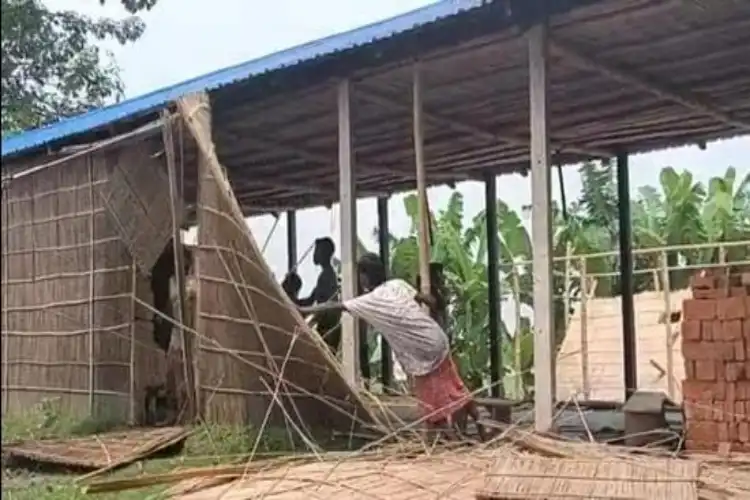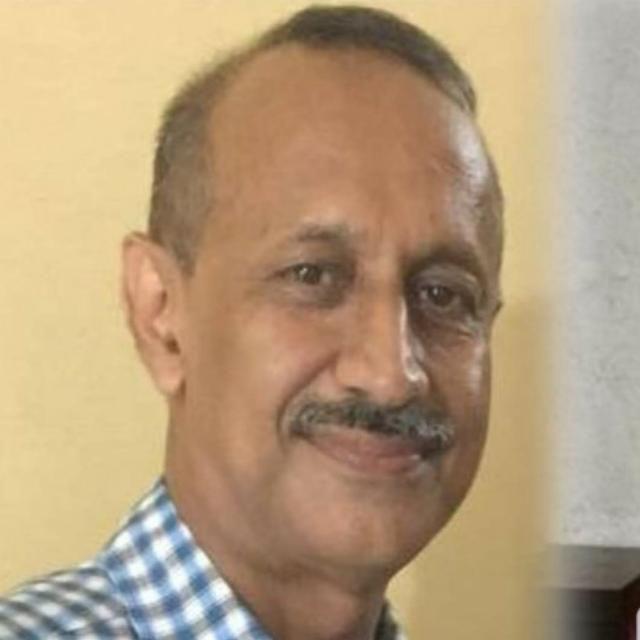
 Pallab Bhattacharyya
Pallab Bhattacharyya
On September 7, Assam Chief Minister Himanta Biswa Sarma during an interaction with the press on the charge leveled by Asaduddin Owaisi-led All India Majlis-e-Ittehadul Muslimeen (AIMIM) on the demolition of minority educational institutions said, “These Madrassas were operating as the office of Al Qaeda. On Tuesday people in an area in Goalpara demolished a Madrassa for their links with Al Qaeda.” Residents at Darogar Alga in Goalpara district demolished a private madrassa, where two Bangladeshi nationals worked as teachers in the past. They were absconding and wanted by Assam police for alleged links with Ansarullah Bangla Team (ABT), a banned terror group and an affiliate of Al Qaeda in the Indian Subcontinent (AQIS).
In August the Assam government razed three Madrassas. However officially it is maintained that these Madrassas were demolished as they were unauthorized and violated Disaster Management guidelines. It is worthy to mention here that recently Assam police have arrested around 37 persons including Imam and Madrasa teachers linked with AQIS and ABT.
This spate of incidents and allegations and counter allegations by political parties, of different hues, whose use of the fragile situation for realizing their political goals has become the order of the day. However, this runs counter to the aspirations of the Indian Constitution makers who espoused the creation of a pluralistic society-a characteristic of India in general and Assam in particular.
In this critical scenario, prevailing in the country from the point of view of the minority communities, it is worthy to mention the churning through which the Hindu society was also passing through, as well. The murder of four prominent persons viz Narendra Achyut Dabholkar, author from Maharashtra in 2013, Govind Pansare, lawyer and political activist in Kolhapur in February 2015 for arguing that Shivaji was a secular leader, Malleshappa Madivalappa Kalburgi, Sahitya Academy Award winner in August 2015 and Gauri Lankesh, a journalist from Bangalore on in September 2017 are testimonies to the foreign, anti-democratic, extreme rightist ideas propagated in this Sanatana-dharmic culture of Hinduism.
Hate speeches delivered at Haridwar in Uttarakhand in December 2021 at a dharma Sansad (religious assembly) of Hindu ascetics had queered the pitch to a considerable extent. In the inflammatory hate speeches, speakers even called for a genocide of Muslims and other minorities in the name of protecting Hinduism. The government's apathy in the face of the hate event has been condemned by a wide cross-section of Indian society, including retired military leaders, civil society activists, students, academics, and retired judges.
Close on the heels of such incidents, the "Sulli Deals" and “Bulli Bai Aps” came as bolts from the blue for Indian society where secularism is regarded as a Constitutional safeguard in a positive sense in contradistinction to the French idea of secularism. Sulli Deals was an open-source app that contained photographs and personal information of some 100 Muslim women online. An FIR was lodged by the Delhi Police with National Commission for Women taking suo moto cognizance of the matter on July 8, 2021.
The creator of the app was a BCA Student from Indore, Madhya Pradesh. On 9 January 2022, Aumkareshwar Thakur, who created the app to "defame" Muslim women, was arrested. In 2022, the Bulli Bai app was created to auction Muslim women, in which the same group was suspected to be involved. The credit for this goes to Neeraj Bishnoi, an engineering student, hailing from the land of Sankar-Ajaan!
As the trial in the Gauri Lankesh case progresses in a Bengaluru court, it turned out that the group behind Gauri’s killing did not assemble because they wanted to murder her. They came together years earlier to identify ‘deshdrohis’, eliminate them, and establish a ‘Hindu Rashtra’. The trigger for attacking Gauri was not her journalistic work, but a short video clip of a speech she made about Hinduism.
Interestingly the kingpin of this crime was Amol Kale, a 23-year-old mechanical engineer working earlier in a multinational company in Pune. On being radicalized, he quit his job, started selling books about spirituality, joined satsangs (religious events), and listened to speeches promoting violent Hindutva. Amol’s spiritual journey led him down a path of violent indoctrination and in this respect a hardline Hindutva organization named Sanatan Sanstha established by an ideologue Jayant Balaji Athavale played a prominent role.
Established in 1990 as a charitable trust, the Sanstha maintained secrecy around its ashram located in Ponda, Goa. Between 2007 and 2009, the Sanstha’s members were arrested as suspects in four separate bombings of public places in Maharashtra and Goa.
The Maharashtra, Goa, and Karnataka governments had submitted a lengthy dossier to the Union Home Ministry calling for a ban on the organization in 2011. The request was ignored and the group continued to operate.
In the case of the assassination of Narendra Achyut Dabholkar on 18 August 2018, the CBI arrested Sachin Prakasrao Andure, suspected of being one of the gunmen. The same group of right-wing activists is behind the killings of rationalists Narendra Dabholkar, M M Kalburgi, and journalist Gauri Lankesh, a senior police official said quoting investigation reports. Investigators further believed that all four murders were linked and that the conspirators had 34 more on their list, including the late artist Girish Karnad.
It is interesting to note that the demolition of the Babri Masjid in 1992 and the Metei-Muslim conflict in Manipur in 1993 set the stage for the arrival of Muslim militant outfits in Assam in general and Manipur in particular. The author who happened to be the Superintendent of Police ofKarimganj, the district bordering Bangladesh from 1992 to 1995 saw the apprehension of Assamese Muslim youths coming back to Assam after undergoing training across the border.
The impact of globalization around the same time had made the world a small but interconnected place with foreign ideals having bearing on religious intolerance and belligerence creeping into the country, slowly but steadily and surreptitiously to foster radical ideas. In December 2015 in a new manifesto posted online Daesh vowed to expand its fight to India, claiming it to be a part of Daesh’s “caliphate”. The manifesto also reported the joining of at least 25 Indians with Daesh.
The updating of the NRC exercise and the concomitant problems faced by the minority community, the issue of D-Voters, and such other narratives have made the soil of India in general and the North-East in particular fertile ground for the radicalization of some youths from both Muslim and Hindu Community as is exemplified by the above chain of events.
ALSO READ: Tackling radicalization in the land of Sankar-Azan
Assam with its share of 4 Muslims (approximately) out of every 10 people and the adverse international environment, cannot think of a solution ignoring the minority communities.
(To be continued)
(Writer is a former Director-General of Police, Special Branch, and ex-Chairman, APSC. Views expressed by him are personal.)
